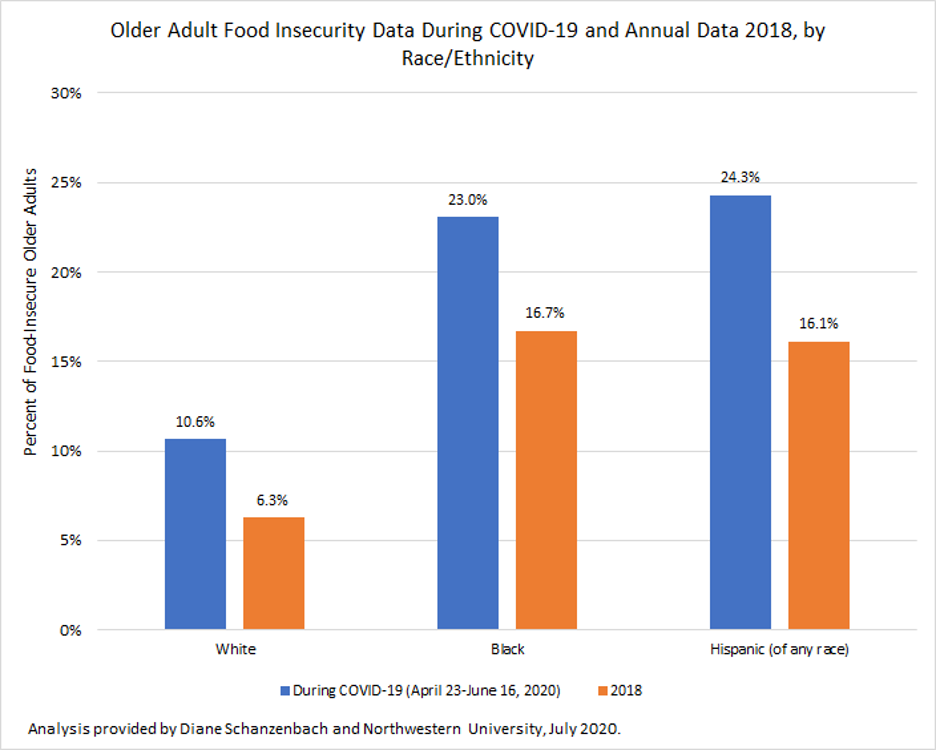July 31, 2020
A new analysis from Diane Schanzenbach and Northwestern University shows that 13.5 percent of older adults (60+) face food insecurity, a dramatic increase of nearly 60 percent from pre-COVID-19 levels. Food insecurity rates are especially high among Black and Hispanic older adults.
The analysis aligns with what communities across the country have been seeing firsthand: older adults, many of whom were already struggling to meet their food needs prior to the COVID-19 crisis, are facing even more challenges with putting food on the table.
The data underscore the urgent need for the Senate to reject Senate Majority Leader McConnell’s proposed COVID-19 response and immediately pass the next COVID-19 relief package that includes vital SNAP boosts.
Findings
1. Food insecurity rates among older adults have increased 58.8 percent during the COVID-19 crisis with 13.5 percent of older adults struggling to put food on the table.
Chart 1

2. Black and Hispanic older adults have disproportionately experienced higher levels of food insecurity during COVID-19, exacerbating prior rates of disproportionate food insecurity levels.
While older adults across racial and ethnic groups are experiencing substantially elevated rates of food insecurity during COVID-19, Black and Hispanic older adults had dramatically higher food insecurity rates compared to White older adults.
Chart 2

These disparities in food insecurity rates among Black and Hispanic older adults during COVID-19 exacerbate pre-existing disparities in food insecurity rates in 2018.
Chart 3

Data note: The Census Household Pulse Survey (CHHPS) asks about food insecurity in the past seven days, while the Current Population Survey Food Security Supplement (CPS-FSS) asks about it over the prior year. CHHPS data adjusted to be comparable to CPS-FSS using the method described in Schanzenbach and Pitts (2020).
Boost SNAP Now
Leveraging the effectiveness of SNAP is a solution that makes sense.
SNAP is proven to be effective in supporting nutrition, health, and well-being not only among older adults, but among people of all ages. SNAP acts as an economic stimulus. Each $1 of SNAP benefits during a downturn generates between $1.50 and $1.80 in economic activity.
Join FRAC in urging Congress and the White House to 1) boost the SNAP maximum benefit by 15 percent; 2) increase the SNAP minimum monthly benefit from $16 to $30; and 3) suspend all SNAP rules changes that would terminate or weaken SNAP benefits.
Such measures should continue until there is sufficient economic recovery.
A special thank you to Diane Schanzenbach and Northwestern University for sharing this data, and to Susan Beaudoin, Senior Special Projects and Initiatives Associate, and Will Sturgeon, FRAC intern, for creating the graphics.


